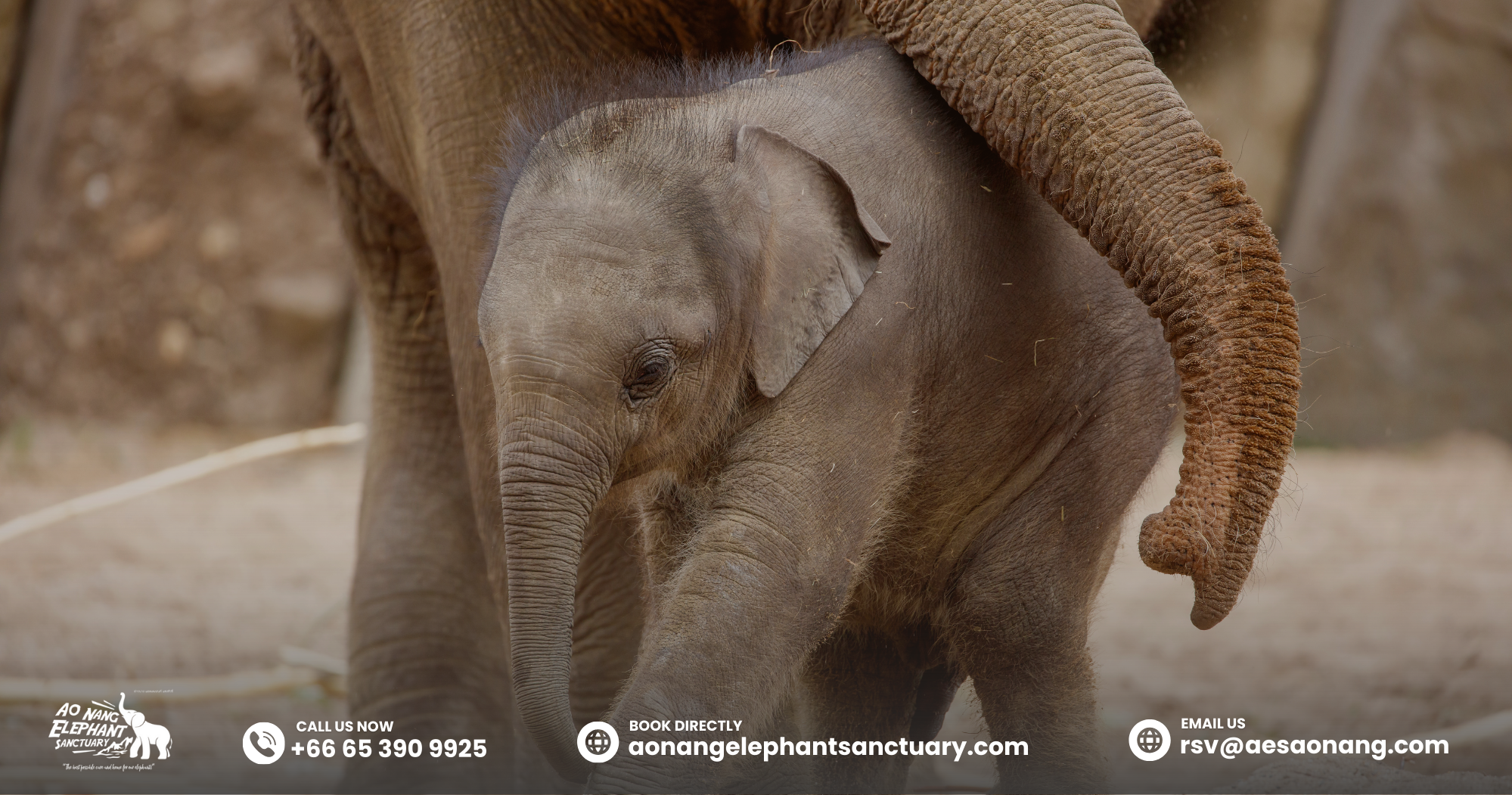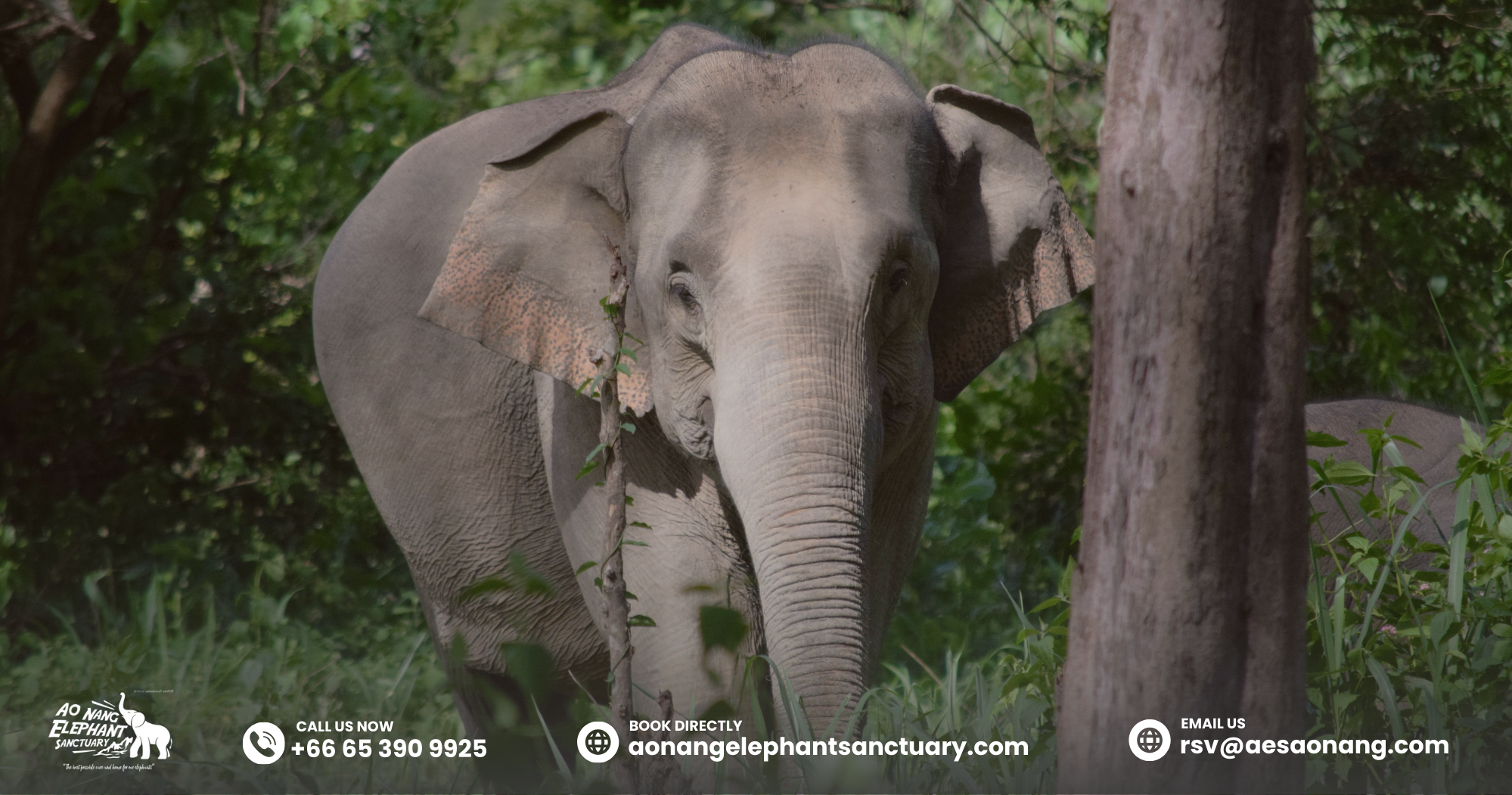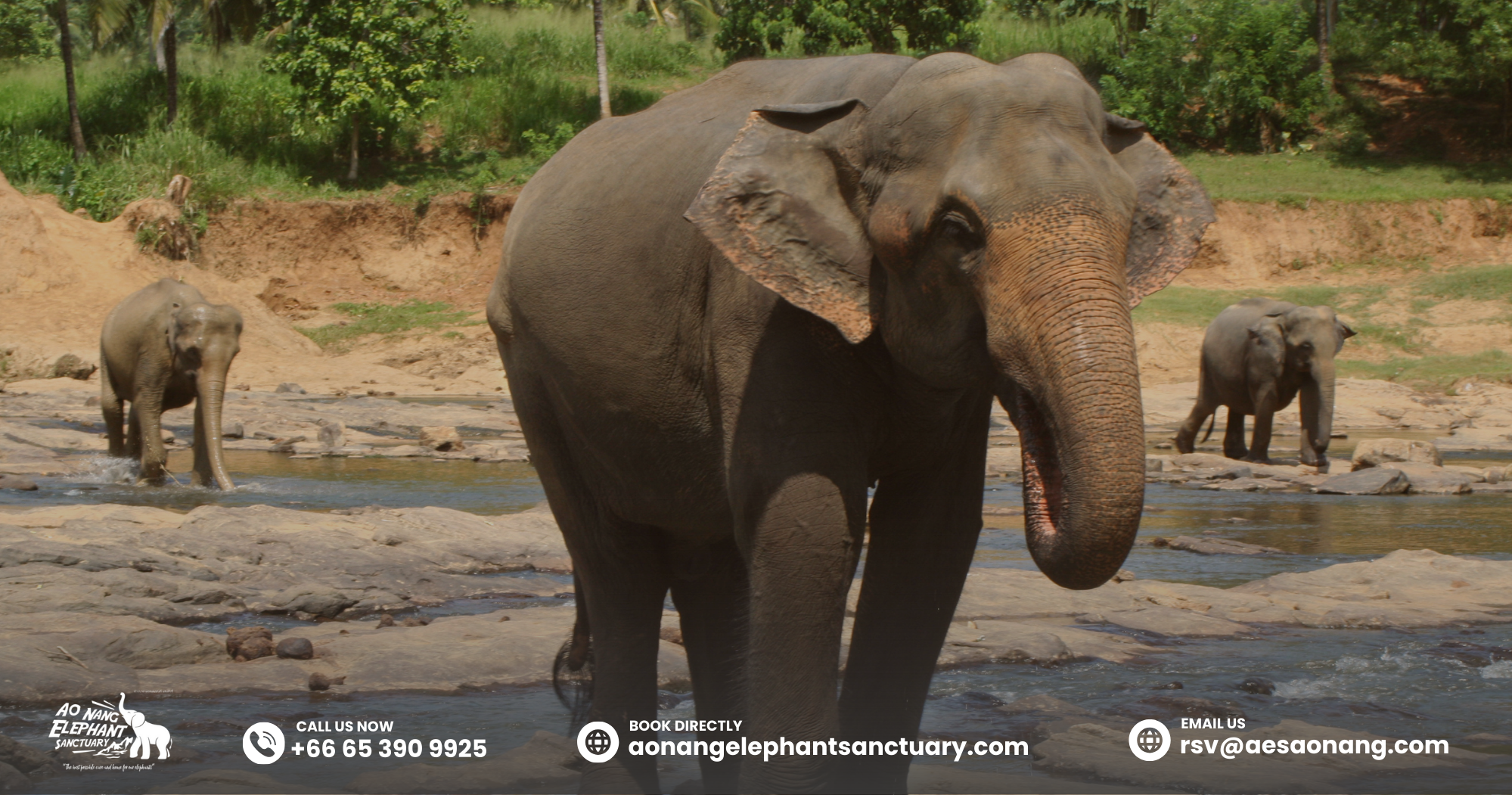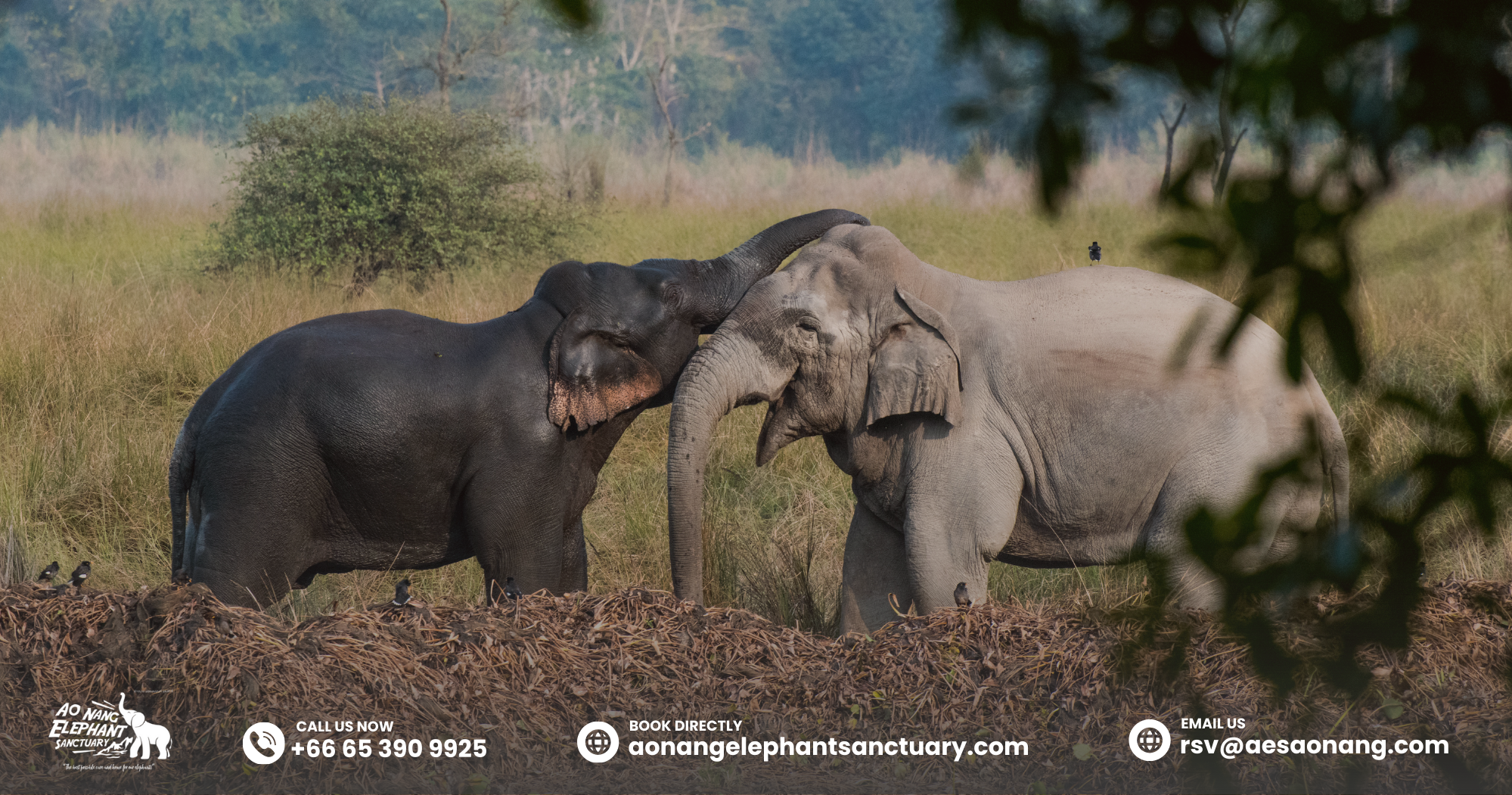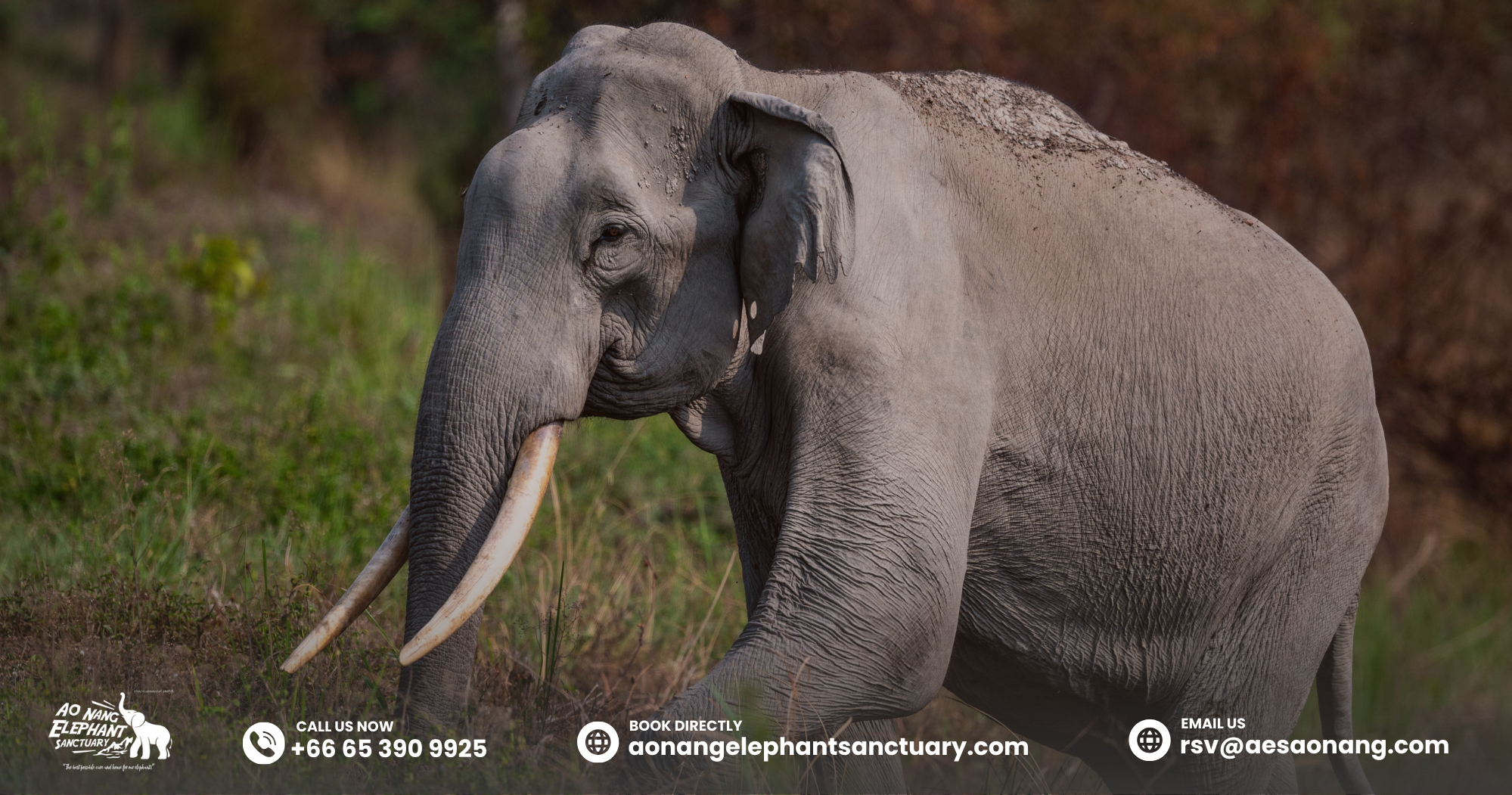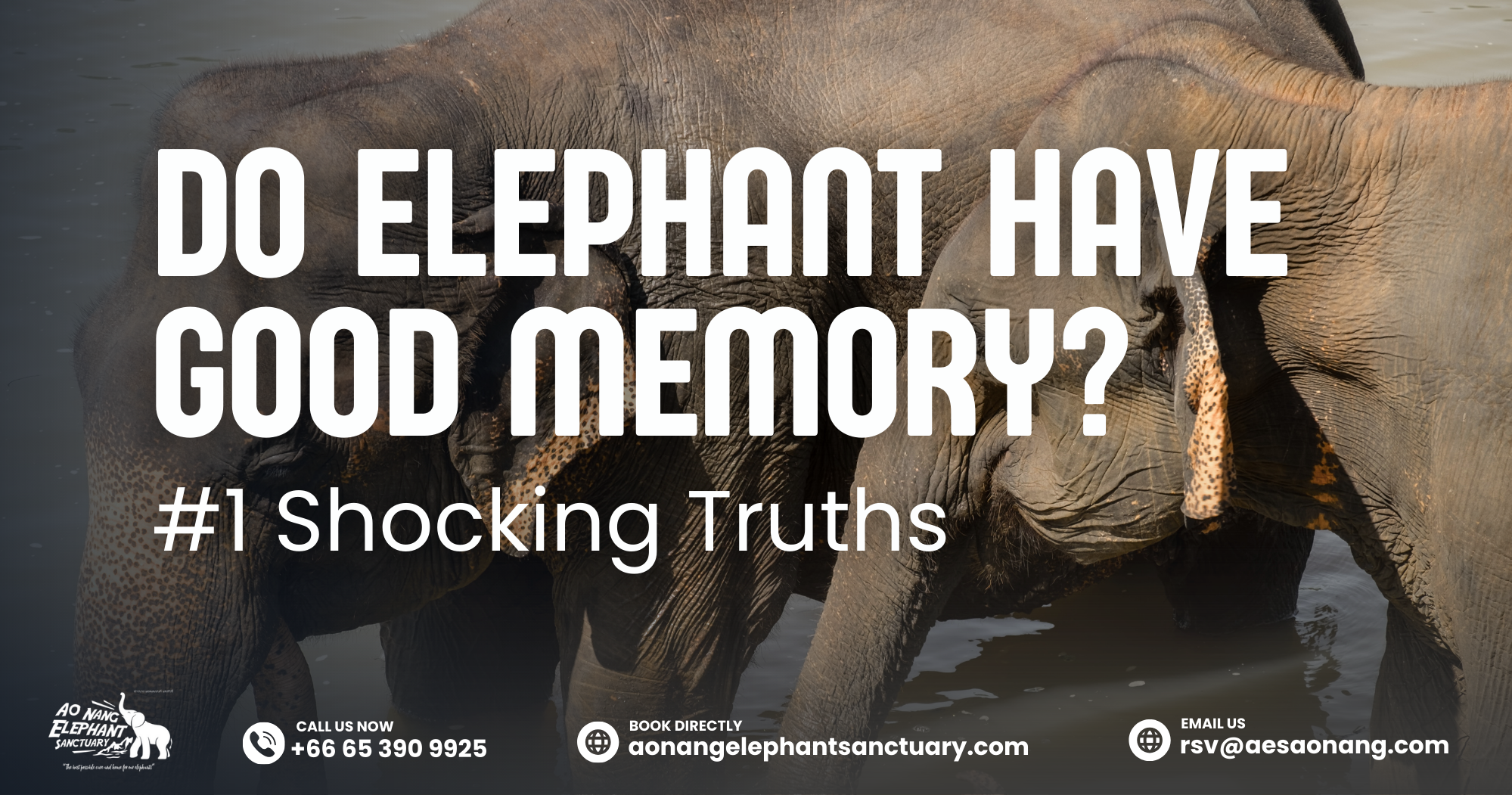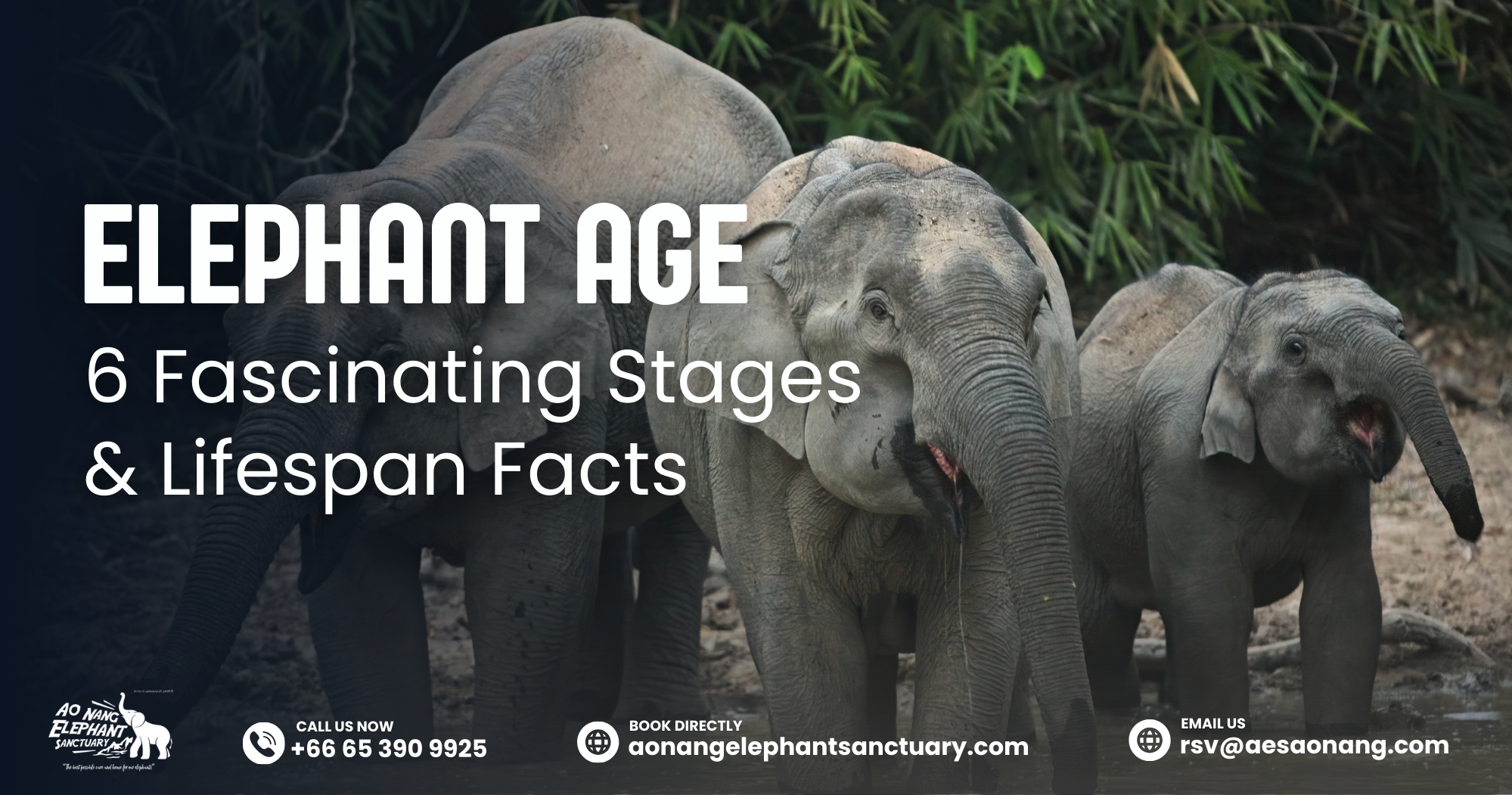
Elephant Age: 6 Fascinating Stages & Lifespan Facts
Elephants are astonishing animals, and one of how they are admirable is through the elephant age, their long lives, emotions, and very complicated social worlds. At Ao Nang Elephant Sanctuary, we usually relate the stages of the elephant’s life to human growth so that the visitors can understand these gentle giants better.
The living beings that result from their mothers, ranging from newborn calves to wise elders, go through very clear stages of life that have a common aspect, which is the comparison with human one’s own development, but differ in the length of their lives.
How about we familiarize ourselves with elephant age grouping – from calf to elderly – as well as behaviors, social roles, reproduction, and the implications of each stage for caretaking in sanctuaries?
It’s important to note that the specific ages and milestones can vary among individual elephants and different elephant species. Factors such as genetics, nutrition, and environmental conditions can also influence an elephant’s development and lifespan.
Calf: The Newest Beginning (0–5 Years)
The life of an elephant starts as a calf and is very simple as it depends on the mother for everything. , which is typical of this elephant age stage. Rest, stay, and food are the activities they do together. Such babies weigh 100–120 kg (220–265 lbs) and are usually very close to their mothers, which ensures them safety, food, and learning.
- Human equivalent: infancy and early childhood.
- Key milestones:
- Within hours, they can stand and walk.
- For a year or even more, they are exclusively nursed.
- Around two weeks, they start to develop their trunk coordination.
- They start to play with other calves.
At Ao Nang, visitors frequently observe little elephants running behind their mothers and exercising their trunk control, which is similar to human babies that are learning their motor skills. This time is very important for the development of emotional bonds, the desire to know the world, and social learning.
Juvenile: Gaining Independence (5–10 Years)
Once calves initiate feeding and start exploring, they are in the juvenile stage. The transition of a calf from complete dependence to more independence is accompanied by learning essential skills and behaviors from the herd.
- Human equivalent: middle childhood to early adolescence.
- Key milestones:
- Improved coordination and play behavior.
- Socializing and establishing relationships with peers.
- Learning the hierarchy, foraging, and survival behaviors.
At the sanctuary, juvenile elephants are mostly indulging in chasing siblings, copying the behaviors of the adults, and practicing herd etiquette. Visitors may support both learning and nutrition by preparing delicious snacks that closely resemble natural feeding.
Sub-Adult: Exploring Identity (10–15 Years)
For the sub-adult stage, the elephants are more courageous and self-reliant; however, they are still not entirely grown-up. Their eagerness to know more broadens, whereby a few might go slightly beyond the natal herd.
- Human equivalent: adolescence.
- Key milestones:
- Physical growth moving towards adult size.
- Social identity and independence development.
- The隔s may become solitary while the females stay close to the family group.
Mahouts from Ao Nang observe quieter changes in the body language of the subadult who is either exploring the boundaries or testing the social norms. This is a crucial stage for the elephants to acquire emotional toughness. The visitors get to see and understand this development as they watch them being playful, assertive, and full of vigor.
Adult: Reaching Full Maturity (15–30 Years)
Elephant age around 15–20 marks the transition into full maturity. Elephants go through a change from childhood to the stage of adulthood when they are between 15 and 20 years old. Basically, they have already grown up fully and are physically developed, so they start to participate with their power in the life of the herd.
- Human equivalent: late adolescence through mid-adulthood.
- Key milestones:
- Behavioral and physical maturity of a full-size.
- Females generally become mothers or take on matriarchal roles.
- Males may get musth, which is a hormonal phase related to competition and mating.
In the wild, adult elephants are the keepers of herd peace, as they act as the example. They demonstrate leadership, guide visitors through nature’s behavior, and act as teachers for younger elephants. Tourists on educational tours, through the experience, learn that respect and not force is what forms trust is formed by.
Middle Age: Wisdom And Responsibility (30–50 Years)
At this point of the elephant life cycle, elephants are the leaders, the mentors, and the support of their social groups.
- Human equivalent: middle age.
- Key milestones:
- Stable, matted, and social coherence.
- High rank in the herd.
- Taking care of the younger elephants and passing on the family knowledge to them.
The elder adults of the sanctuary are the wise ones and the most valuable for the knowledge and the calm they bring. They play a role in helping decide which way the herd will go; the visitors often recall them for their gentle, stoic look. This is how the support given to these elephants creates a situation where the wisdom is handed over to new generations.
Elderly: Age Of Reflection (50+ Years)
Elephants reach the senior point of view at 50 and above.
- Correlation to human life: the aged period.
- Marker Highlights:
- Decrease in movement and blindness development.
- Teeth wear down with hunger, unable to eat properly.
- Made happier by loved ones and living with less stress.
Aon Nang’s elderly are fed with soft food and given more support during movement, besides the provision of a calm place. The slow, dignified performance of these creatures shows a story of tenacity- and it prompts visitors to ponder how to show love and care to the elderly.
Elephant Life Vs Human Life At A Glance
Elephant Stage | Age Range | Human Equivalent |
Calf | 0–5 yrs | Infancy to early childhood |
Juvenile | 5–10 yrs | Childhood through puberty |
Sub-Adult | 10–15 yrs | Early adolescence |
Adult | 15–30 yrs | Young adulthood |
Middle Age | 30–50 yrs | Adulthood to maturity |
Elderly | 50+ yrs | Senior years |
Unique Insights And Fun Facts
- Six Sets of Molars: Elephants go through a life cycle where they change their teeth from the side; each generation gets a new set of teeth.
- Longest Pregnancy Period: About 22 months, which, if we compare it to a human pregnancy, is repeated several times.
- Matriarchal Wisdom: The survival decisions of the herd depend on the elder females; the loss of a matriarch is like losing the memory and refuge of the herd.
- Emotional Bonds: Elephants recognize family members after years apart, grieve losses, and celebrate births with evident joy.
Why Understanding Life Stages Matters
Knowing the lifecycle of an elephant is not only academic—it is the basis for the right elephant care.
- For every phase, a suitable nutrition and activity program is designed for the best health of the animal.
- Keeping in existence the social aspect of the community, deciding when the elephants need to be separate or integrated.
- Identifying the main factors that lead to stress with growth, especially the adolescents who are dealing with gender characteristics or those males who are becoming aggressive.
- Making the elderly as comfortable as possible, particularly when they have difficulties in eating due to worn teeth.
Knowing this at Ao Nang Elephant Sanctuary enables the visitors to have a unique experience through feeding, walking alongside the gentle elephant, and attending the educational storytelling class- all done with compassion and conservation in mind.
Discovering Elephant Life At Ao Nang Sanctuary
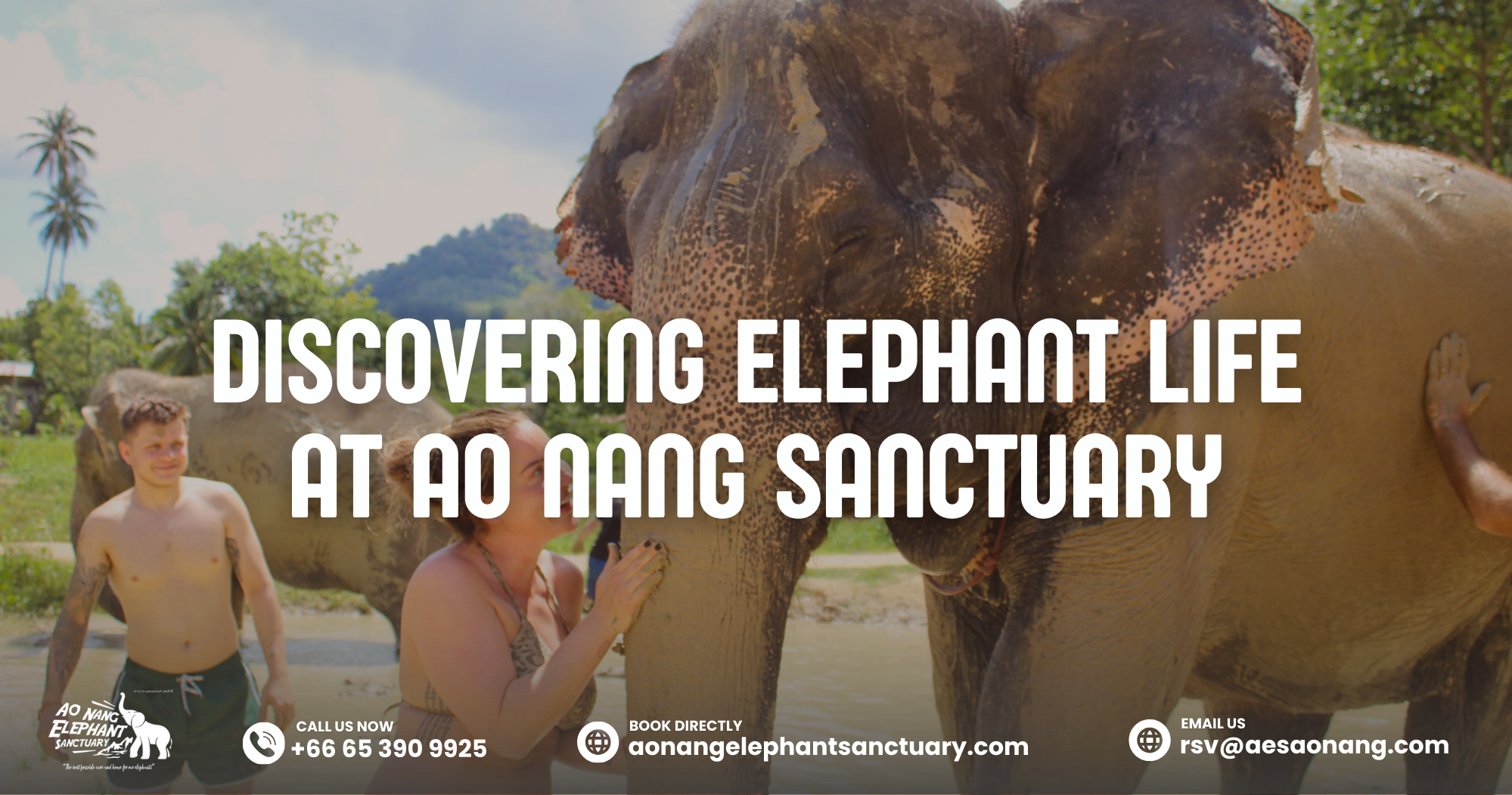
Elephants are mentally sane, structured, and deeply community-based. By matching elephant age with human stages, we get not only a snap view of their growth but also a nod to their path. Teaching calves to feed on milk and being taught by the honored ones, elephants are like us in characteristic—memory, leadership, learning, and legacy.
At Ao Nang Elephant Sanctuary. We protect calves, empower adolescents, support adults, and comfort elders—making sure every elephant enjoys their life to the fullest.
If you are interested in knowing the residents of the sanctuary and seeing the stages of life, then a visit to Ao Nang Elephant Sanctuary might be the best option. By visiting here, you kindle understanding, spread empathy, and deepen our promise to these magnificent creatures.
